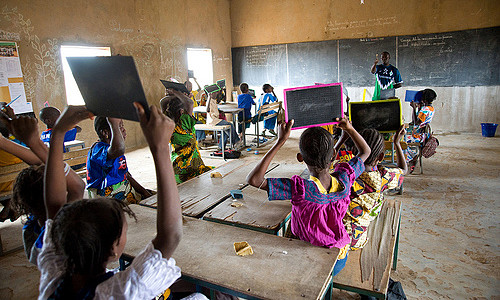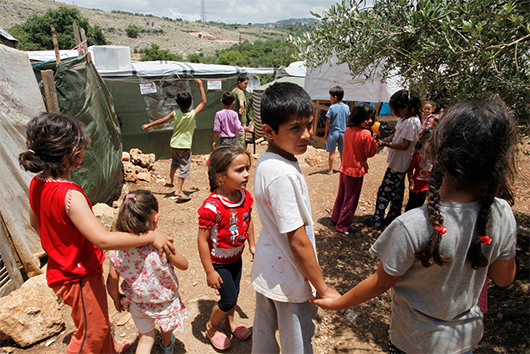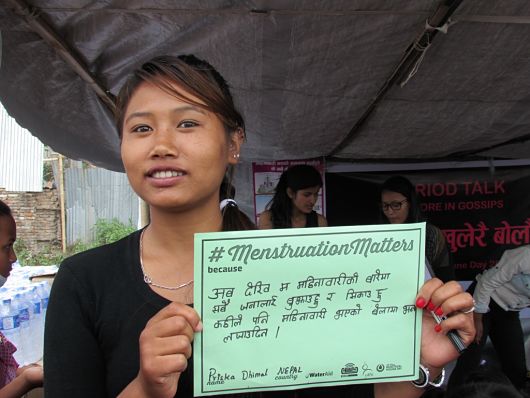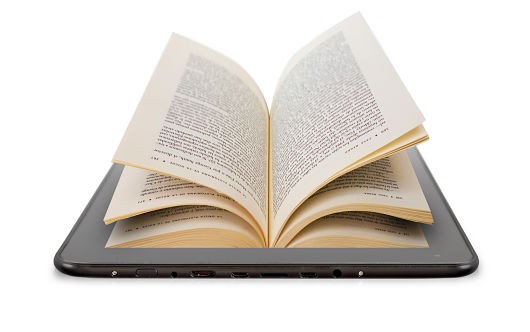 Mobile Phones
Mobile Phones
The most portable device may be the best tool for reaching remote, low-income places. Mark West’s report for UNESCO analyzes how people in varying demographics in seven developing countries value EduTech through mobile reading. The results show that mobile reading opens more opportunities to marginalized people without access to paper books, and is largely enjoyed by all ages. There is an added benefit to mobile reading platforms’ text in local languages, a major disadvantage from paper books: Local authors are in demand, which also opens the job market. West’s publication, “Reading in the Mobile Era: A study of mobile reading in developing countries,” concludes that today’s mobile readers tend to have received a higher level of education than expected without technology.
In Papua New Guinea, the Australian government heavily subsidizes the small country’s education sector. One of its recent research projects, called the SMS Story, texted message stories and lesson plans to elementary school teachers. Teachers received 100 text message stories and 100 text lessons for two academic terms. The goal was to provide content to schools with very few books and resources. The texts also gave teachers reminders and suggestions for what to cover each day.
As a result, the control groups were nearly twice as unlikely to read the words taught. While overall comprehension and progression did not change, SMS Story remained a valuable source of accessible and cheap reading materials.
Tablets
Indonesia’s tablet, or e-Sabek, will drastically lower costs, but will keep quality the same. The goal is to target remote areas in the archipelago. Once provided with these tablets, students will have access to preloaded e-books and a variety of interactive learning apps.
In Kazakhstan, 83,000 tablet computers and notebooks will be given to secondary schools by 2020. Thanks to the government alone, this move is expected to incorporate technology into half of all teaching by 2015 and more than 90 percent of teaching by 2020. This will most greatly affect the 9,300 disabled youth unable to attend schools.
Video Cameras
When used effectively, video cameras provide excellent opportunities for visual reflection. Teachers and students can review what worked and what did not in terms of teaching approaches, curricula content or student participation. Tanzania’s BridgeIT project follows this approach, providing access to digital video content to classrooms. So far, the program’s model runs under the name text2teach in 150 schools in Tanzania and 290 schools in the Philippines.
– Lin Sabones
Sources: World Bank 1, World Bank 2, World Bank 3, World Bank 4, Tech In Asia, Tengri News
Photo: PxHere

 July 12 marked the 18th birthday of the Pakistani education activist and youngest-ever Nobel Peace laureate,
July 12 marked the 18th birthday of the Pakistani education activist and youngest-ever Nobel Peace laureate,  Once known around the world as the finish line of the famous Paris-Dakar Rally, the small West African country of Senegal stands out in from its neighbors. Unlike many of other West African countries like Cote d’Ivoire, Nigeria and Sierra Leone, Senegal has never experienced any notable conflicts or civil war in the last century.
Once known around the world as the finish line of the famous Paris-Dakar Rally, the small West African country of Senegal stands out in from its neighbors. Unlike many of other West African countries like Cote d’Ivoire, Nigeria and Sierra Leone, Senegal has never experienced any notable conflicts or civil war in the last century.





